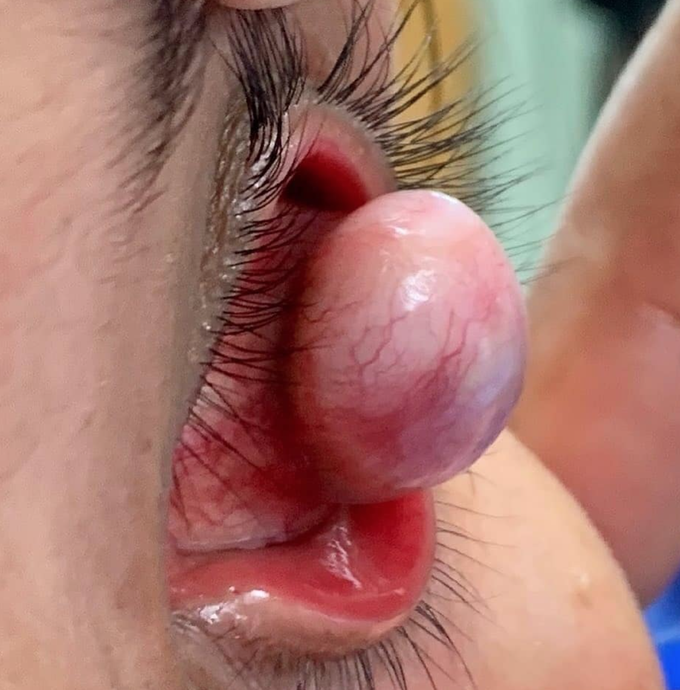


Staphyloma
A staphyloma is an abnormal protrusion of the uveal tissue through a weak point in the eyeball. The protrusion is generally black in colour, due to the inner layers of the eye. It occurs due to weakening of outer layer of eye (cornea or sclera) by an inflammatory or degenerative condition. It may be of five types, depending on the location on the eyeball (bulbus oculi). 👉Anterior (corneal) staphyloma. In the anterior segment of the eye, involving the cornea and the nearby sclera. It is an ectasia of pseudocornea ( the scar formed from organised exudates and fibrous tissue covered with epithelium) which results after sloughing of cornea with iris plastered behind, it is known as anterior staphyloma. 👉Intercalary staphyloma. It is the name given to the localised bulge in limbal area, lined by the root of the iris. It results due to ectasia of weak scar tissue formed at the limbus, following healing of a perforating injury or a peripheral corneal ulcer. There may be associated secondary angle closure glaucoma, may cause progression of the bulge if not treated. Defective vision occurs due to marked corneal astigmatism. Treatment consists of localised staphylectomy under heavy doses of oral steroids. 👉 Ciliary staphyloma. As the name implies, it is the bulge of weak sclera lined by ciliary body, which occurs about 2–3 mm away from the limbus. Its common causes are thinning of sclera following perforating injury, scleritis & absolute glaucoma. It is a part of anterior staphyloma. Source: medicalpedica

